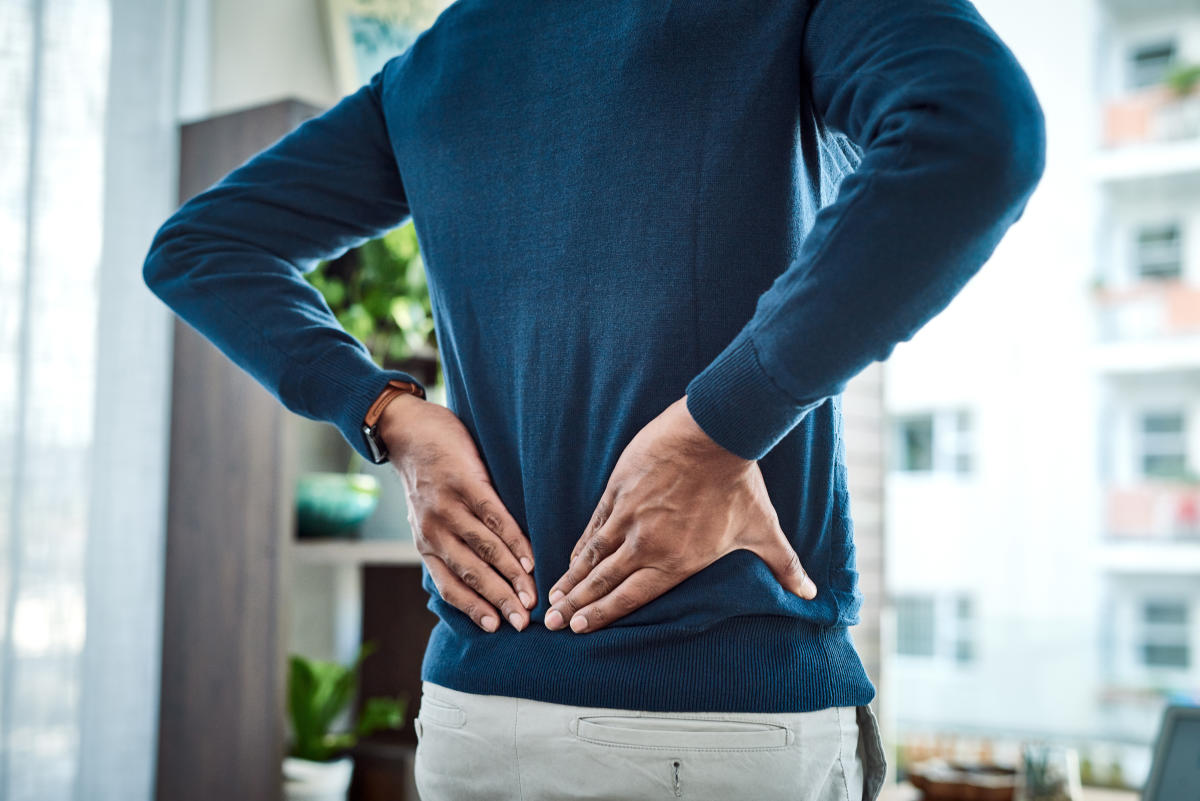Waking up with new aches and pains is hardly the ideal way to start your day, and it can spark a flood of questions. Did you sleep weird last night, or is this the fallout of going too hard at pickleball the day before? Is your workday posture to blame, or could this just be part of getting older?
While you may try to ignore the achiness and hope it goes away on its own, doctors say it’s important not to be dismissive if you’re feeling uncomfortable. “Pain is a warning signal from your body — it’s trying to tell you something,” Richard Ricciardi, associate dean of clinical practice and community engagement at the George Washington University School of Nursing, tells Yahoo Life.
Sometimes the source of your pain is obvious, like you added extra reps to leg day and you’re feeling it now. But other aches require a little detective work. These are the biggest clues doctors look for when someone develops new aches and pains, plus what they recommend doing next.
How common is it to feel aches and pains at some point?
Pain can usually be broken into two main camps: acute and chronic, Dr. Bert Mandelbaum, sports medicine specialist, orthopedic surgeon and codirector of the Regenerative Orthobiologics Center at Cedars-Sinai Orthopaedics in L.A., tells Yahoo Life. Acute pain is due to something like a minor injury or illness and isn’t expected to last too long; chronic pain is something that lingers and can be due to an underlying health issue.
An estimated 24.3% of American adults have chronic pain, according to the Centers for Disease Control and Prevention. “But it is very common to feel aches and pains intermittently, especially as we age,” Dr. Barbara Bawer, a family medicine physician at the Ohio State University Wexner Medical Center, tells Yahoo Life.
The right treatment for common aches and pains ultimately depends on what’s behind them, making it important to try to ferret out the source of your discomfort when you can.
How can you tell if your pain is from an injury or just getting older?
If you’re not sure what’s going on and the pain is lingering, it’s best to get an evaluation from a health care provider. But while you’re waiting for an appointment, there are a few major clues to what might be causing your discomfort.
You slept wrong
Timing is important with this one. “You may wake up with pain in your neck or back that can be muscular in nature after sleeping wrong,” Dr. Whitney Luke, chair of the Department of Physical Medicine and Rehabilitation at the Ohio State University Wexner Medical Center, tells Yahoo Life. “It can feel like a muscle cramp, or you may notice pain with rotation of your head or back.” This can happen when, say, you fall asleep on your stomach with your head turned to one side.
This pain will usually stick around for a day or two before getting better, Luke says. (Here’s how to get relief from neck pain after sleeping wrong, along with sleeping positions designed to help reduce back pain.)
Your mattress isn’t a good fit
The right mattress and pillow can make a big difference in how likely you are to experience pain, Mandelbaum says. The overall goal is to keep your spine neutral, meaning you don’t want your head to be angled higher or lower than your spine — a naturally curved spine is ideal.
“If your mattress and pillow is too hard, or you’re angled wrong, you can get aches and pains in your back and neck in the morning,” Mandelbaum says. As with sleeping in a weird position, those aches may feel worse in the morning and then ease up throughout the day. (These are the five signs it’s time to replace your mattress, plus tips on finding the right pillow based on your go-to sleeping position.)
You spent too much time hunched over your computer
Your workstation ergonomics are important, Luke says. “If your desk or chair is not the correct height, you may notice pain in your neck or shoulders that improves with stretching or rest,” she says.
If this is a regular issue for you, Ricciardi suggests reevaluating your desk setup, along with your posture while you work. (Here’s a handy guide on how to set up a more ergonomic workstation.)
You worked out too hard
Some soreness is normal after a workout, and it’s usually obvious when this happens. “After a strenuous workout, your body may be sore, especially in muscles you do not work out or use as often,” Luke says.
That aching and tenderness is caused by microtears in the muscle fibers, which actually help strengthen the muscles over time. The good news? You should start to feel better in a couple of days, notes Luke. In the meantime, these yoga poses can help ease muscle soreness. But if the discomfort isn’t getting any better after a few days, that could be a sign of an injury, which is worth mentioning to your doctor.
You have osteoarthritis
Osteoarthritis is a joint disease that involves the breakdown of cartilage and tissues in the joints over time. It’s the most common type of arthritis and occurs more often in older people, according to the National Institute of Arthritis and Musculoskeletal and Skin Diseases (NIAMS).
While everyone experiences the condition differently, people with osteoarthritis usually have joint pain and stiffness in the hands, knees, hips, neck and lower back, per NIAMS.
“Pain from osteoarthritis can range from mild to severe,” Luke says. “It often presents as pain in your joints that is improved in the morning after rest and worsening throughout the day as you are more active.” Osteoarthritis may also cause you to have less of a range of motion than you did before, she adds.
The joint disease can be diagnosed through a physician’s exam and may include an X-ray or MRI, according to NIAMS. While there’s no cure for osteoarthritis, there are pain and anti-inflammatory medications that can help.
You strained a muscle
Muscle strains happen when muscles are stretched beyond what they normally should, Mandelbaum explains. There are different types of strains — some are minor and others are more severe — and they most often strike the lower back or hamstrings. The typical treatment for strains includes rest, ice, compression and elevation, according to Mayo Clinic.
“If it’s a simple strain, you’ll be back to it within 10 days to two weeks,” Mandelbaum says. “But it can take up to 12 weeks or more for more severe strains.” Surgery may be required in severe cases.
Signs your aches are due to aging
Aches linked to aging are usually from osteoarthritis, Luke says. She lists these as signs that your aches are from getting older:
-
It gets worse throughout the day.
-
It bothers you more after harder workouts or longer walks.
-
The pain happens on a pretty frequent basis.
What to do when you have new aches and pains
There are a few things you can do if you notice new aches and pains. Icing the area can help tamp down inflammation, along with taking a nonsteroidal anti-inflammatory drug (NSAID) like ibuprofen or naproxen, Luke says. If your muscles are feeling tight, using some heat, like from a heating pad or warm compress, might also be helpful to loosen things up, Bawer says. (You can ice later, Ricciardi says.)
Unless you’re injured, movement is also key, according to Mandelbaum. “Our bodies are programmed to be active,” he says. That doesn’t mean you need to go out and run 5 miles if your legs are sore, but trying to walk a little may help your muscles loosen up, ultimately helping you to feel better, he says.
Luke agrees. “Staying as active as possible with stretching and movement is important,” she says. “Not exercising or laying in bed is the worst thing you can do.”
When to see a doctor for your aches and pains
Given how common aches and pains are, it’s fair not to want to head to the doctor every time you feel a twinge. But Luke says it’s worth at least considering seeing a health care provider if you’re in pain or the achiness doesn’t get better over a few days after using treatments like heat (or ice), NSAIDs and stretching. Your doctor should be able to evaluate you and suggest a targeted treatment plan from there.
Luke also says that you shouldn’t shrug off osteoarthritis pain and assume you have to learn to live with it. “For arthritis-type pain, there are often interventions that may help too, like physical therapy, bracing or joint injections,” she says.
Mandelbaum adds: “Pain is part of life, but managing it is an important part of health and wellness. Don’t ignore pain.”

